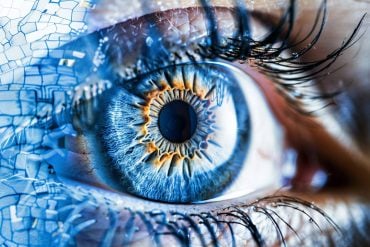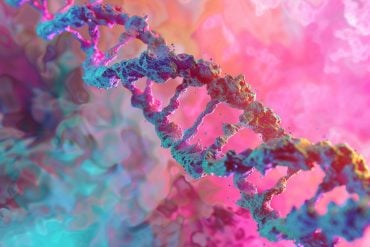Research reveals our visual system is a “sensitive lie detector”.
What makes humans attractive to other humans?
Queen’s University Professor Nikolaus Troje (Psychology, Biology, School of Computing) believes that it is the consistency of the whole appearance rather than the attractiveness of the parts.
“Most previous work on attractiveness focused on the effect of isolated features.” says Dr. Troje. “The current study demonstrates how important it is that these features fit together well.”
Participants were shown schematic point-light displays that depict a person using 15 moving dots. The representation conveyed both the individual characteristics of a person’s movements and their individual body shape.
Dr. Troje’s team isolated these two areas and separately measured the attractiveness of individual movement styles as well as individual body shapes based on ratings obtained from his research participants. The researchers then combined the movement style of one person with the body shapes of another person and collected attractiveness ratings from these “hybrid walkers.”
Based on this data, the researchers asked the question: Is the attractiveness of the isolated movement and the attractiveness of the isolated body shape sufficient to predict the attractiveness of the hybrid walker?
It is not; the hybrid walkers are deemed less attractive than predicted by the movement and the shape used to make them.

“We found that attractiveness depends on internal consistency – whether the movement and the shape match each other or not,” says Dr. Troje. “Our visual system is a sensitive lie detector that perceives even the slightest inconsistencies and responds negatively to them.”
The results call for re-examination of earlier research that looked at attractiveness in a piecemeal way.
“They can also be used to formulate advice to people who are working on improving their own appearance,” says Dr. Troje. “What works for one person may not work for another one. If in doubt, just be yourself.”
Source: Anne Craig – Queen’s University
Image Source: The image is in the public domain
Original Research: Abstract “Internal consistency predicts attractiveness in biological motion walkers” by Malte Klüver, Heiko Hecht, and Nikolaus F. Troje in Evolution and Human Behavior. Published online July 11 2015 doi:10.1016/j.evolhumbehav.2015.07.001
Abstract
Internal consistency predicts attractiveness in biological motion walkers
Why do some people appear attractive to us while others don’t? Evolutionary psychology states that sexual attractiveness has evolved to assess the reproductive qualities of a potential mate. Past research in the field has identified a number of traits that can be linked directly to qualities such as immuno-competence, developmental stability, and fertility. The current study is motivated by the hypothesis that attractiveness is determined not just by individual, independent traits, but also by whether their pattern is internally consistent. Exploiting the domain of biological motion, we manipulated internal consistency between anthropometry and kinematics of a moving body. In two experiments, we varied internal consistency by using original point-light walkers (high internal consistency) and hybrid walkers, generated by combining anthropometric and kinematic data from different walkers (low internal consistency). As predicted, we found a significant link between internal consistency and sexual attractiveness, suggesting that internal consistency signals health and mate quality.
“Internal consistency predicts attractiveness in biological motion walkers” by Malte Klüver, Heiko Hecht, and Nikolaus F. Troje in Evolution and Human Behavior. Published online July 11 2015 doi:10.1016/j.evolhumbehav.2015.07.001






